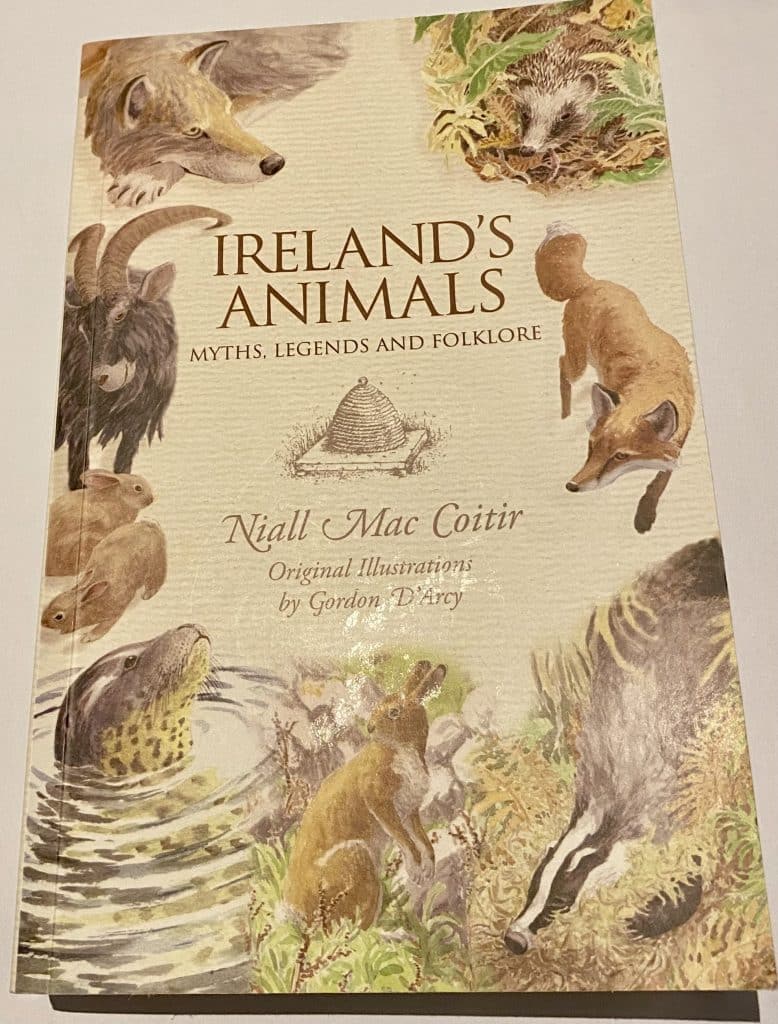I have a small, energetic dog that has never grown up – a puppy in a four year-old’s body. To me, he represents so much: our escapes into the countryside during lockdowns; the stress of training him only for him to revert again and again; the relaxing nights lounging on the sofa as he curls up beside me, nosing me until I stroke him. Such animals mean much more than their biological or physical traits; whether on a personal level, like mine, or on a narrative level embedded in the lore and mythology of a culture. Niall’s overview in this book presents a wonderfully colourful analysis of these symbolisms and meanings, drawing extensively from original sources within ancient Irish history. If you are interested in the symbolism and lore surrounding animals in IrelandIrish mythology or Irish history, then this is definitely worth considering. And this is why I have written this Book Review of Niall Mac Coitir’s book Ireland’s Animals.
Author: Niall Mac Coitir has an evident love and knowledge of Irish prehistory, particularly being a fluent Irish-speaker. This book is one of four, each covering a different theme: birds, plants, animals, trees. So while he doesn’t have any prestigious academic accolades or titles, he has a deep and well-researched understanding of the subject-matter on Irish mythology and Irish history.
Summary: The book is structured around Niall’s own classification of animals, using the elemental taxonomy to separate cats from dogs (if you will): fiery -wolves, lizards, horses; airy – cats, bats, bees; earthy – cows, pigs, dogs; and water – seal, otter, snake. The lists are only indicative here, as the actual list of animals is over 25. In each section, it looks at the folk beliefs and customs, myths and legends, usage in placenames, and relations with humans. In this way, he presents a holistic picture of how animals have been historical regarded in Irish literature and practice. But a summary cannot omit one of the most striking features of the book, which is the incredible illustrations by Gordan D’Arcy. They are works of art in and of themselves. The book is worth buying if only for these beautiful depictions.
My view: Overall I enjoyed this book for its detailed research, especially on placenames – for instance, I never knew Limavady means “the dog’s leap”, as derived from “a gorge south of town over which a dog of ancient times carried a message of impending danger”1. As I come at this from the perspective of understanding ancient Ireland, it’ll be no surprise that I particularly enjoyed the many translations Niall provides on poetry and ancient literature. Where I’ve read such translations before, they can be so dense and lacking in context I don’t really understand their meaning, whereas with Niall’s approach, it is clear how they were spoken and why. They are truly an invaluable resource and one I have gone back to several times. My only criticism was the structure can make it hard to follow or return to sections from before. There is so much content, so much research, it can be overwhelming as a reader to understand what’s most important.
Favourite quote: “So effective were dogs as guardians against fairies that in a poem from County Donegal a fairy woman laments how dogs disrupt her going about her business:
Dogs in front of the bushes
Dogs behind the folds
Dogs who upset my dish
Dogs who hunt me, may they die
Favourite fact: That the native wolf was not believed to have been particularly aggressive towards humans at all. The ancient Brehon Laws make no mention of wolf attacks which is a striking omission.
Book specification: 238 pages, around 33 chapters (see above for structure), published in 2010.
Available here on: Amazon £11.99

- https://www.britannica.com/place/Limavady-Northern-Ireland ↩︎
For more of my posts please see here or to follow me on Twitter see here
